Where Next for Scottish Labour?
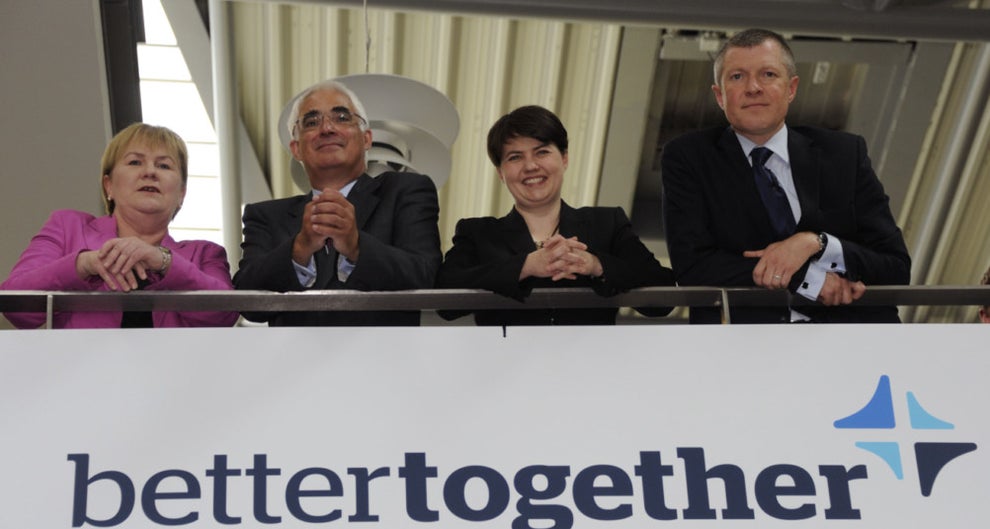

On the eve of the announcement of Scottish Labour’s latest leader, Jim Monaghan looks at where the party are now and where they might be going.
With less than 3 months to the 2021 Scottish Parliament Election, Scottish Labour have a problem. Currently polling at around or under 20%, it’s difficult to see how they can or will improve on that or on their result in the 2016, when they took 22% of the constituency vote and just 19% of the list vote, losing 14 seats.
It seems that the party, despite lots of internal navel-gazing since their spectacular collapse in Scotland at the 2015 UK election, cannot agree on how to address this problem. One solution that is eternally popular in Scottish Labour is appointing a new leader. Tomorrow will be the start of the reign of their fifth leader since the independence referendum of 2014.
Anas Sarwar vs Monica Lennon is a battle that has hardly set the heather on fire. The only main difference between the candidates that has attracted any attention is their differing stance on the possibility of another independence referendum. Sarwar maintains the current Labour line of ruling it out, no matter what – Lennon believes that if the Scottish people and, by extension, their elected representatives in Holyrood vote for it, then Labour should not stand in the way of a democratic choice.
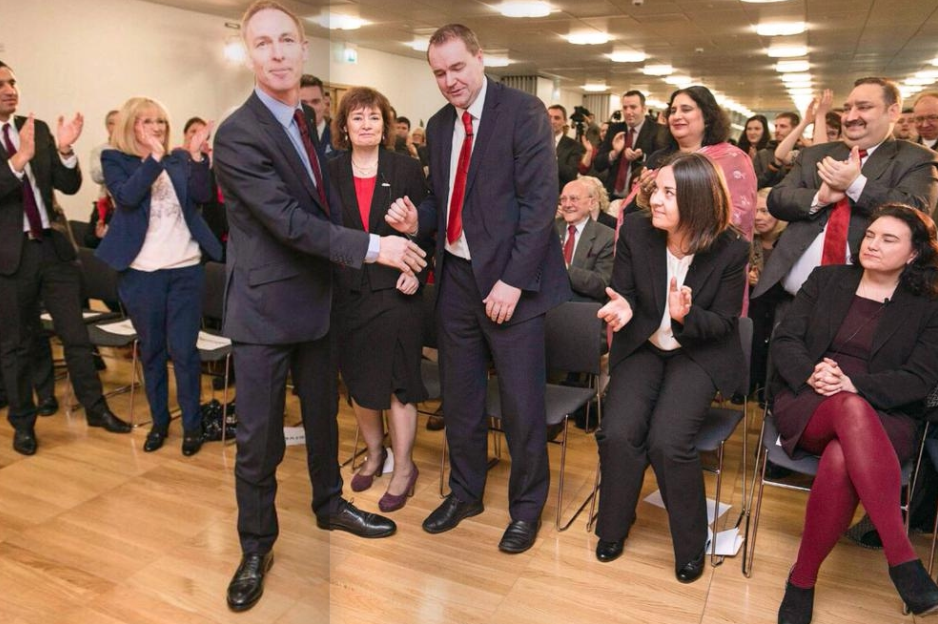

This matters as it is still, 7 years later, the predominant conversation in Scottish Labour circles. Many deny that their actions in the referendum campaign is what caused the collapse. But the evidence is there for all to see. From the 2010 General Election until the disastrous 2015 campaign, Labour did not suffer the revolt from Scottish voters that some had predicted. In the 2011 Holyrood elections Labour lost 7 seats but their vote remained mostly intact, dropping by only half a percentage point from the previous election. In the 2012 Scottish council elections Labour run almost neck and neck with the SNP, their vote rose by 3% and they picked up over 40 more seats. In the 2014 EU elections Labour in Scotland saw a 5% increase in their vote share, this was just months before the referendum on Scottish Independence. The previous year had seen Johann Lamont’s party win a series of local by-elections and the much-heralded collapse of the Labour vote, predicted since the invasion of Iraq 11 years earlier, didn’t look like materialising.
Then came the decision to form a referendum coalition with the Conservatives, wrapped in the union flag, under the word “Together” during the peak of the Tory’s austerity cuts to services, wages and benefits. They were seen by many (enough people to change the outcome of seats) as standing ‘together’ with the Tories. The other choice for centre-left social democrats, the Lib Dems, had been in coalition with the Tories throughout these cuts. The loss of votes from both to the SNP, and the rise in turnout triggered by new voters from the referendum, would kill off both parties who had formed the first 2 Governments of the devolved Scottish Parliament from 1999 through to 2007.


In the following General Election, led by one of the most prominent figures from the Better Together campaign Jim Murphy, Labour lost 40 of their 41 seats. How this happened is highlighted perfectly by what were my home constituencies in 2010.
In Ayr, Carrick & Cumnock Scottish Labour lost over 7,000 votes from 2010, The Lib Dems lost 3,000 and the increased turnout showed 7,000 more votes cast. The SNP vote went up by 17,000. Likewise, next door in Kilmarnock & Loudon constituency, Labour lost 8,000 votes, Lib Dems lost 2,500, turnout increased by 7,500 = SNP vote rose by 18,000. The votes that Labour and Lib Dems lost, combined with the new voters, went directly to the SNP. It’s worth noting that, in both of those seats, the Conservative vote was unaffected, staying much the same as in 2010 and 2005. This shows that it wasn’t a straight reaction to parties who opposed independence, it was very much about the SNP being seen as the new centre-left opposition to the Tories. People expect the Tories to be who they are, they were disappointed in Scotland’s Labour and Liberal parties.
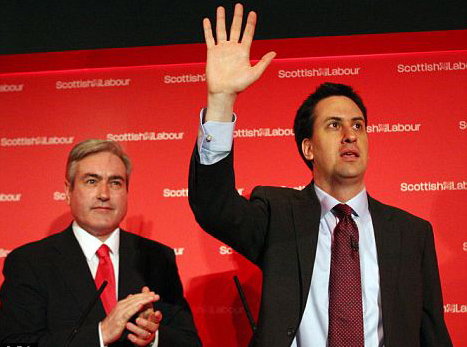

Of course, a significant number of votes in Scotland going to whoever is seen as opposition to the Tories is not a signal that Scotland’s voters are more left wing, as many suggest. It only shows that enough voters are anti-Tory enough to make a difference in almost every seat. In fact as Labour moved leftwards after New Labour’s defeat in 2015, they became less popular in Scotland, their vote share and polling declined.
What the SNP had done successfully was to take Labour’s centre-left managerial clothes from them. The SNP’s White Paper for independence and the subsequent ‘Growth Commission’ show them to be very firmly in what had been New Labour’s territory. This was a clever tactic. We shouldn’t forget that, despite how sometimes like to see ourselves, New Labour were more popular in Scotland than the rest of the UK. When the New Labour project came to an end at the 2010 General Election losing over 90 seats, their vote went UP in Scotland. The new image of the SNP as firmly centre-left had begun by using that same tactic initially against the fringe parties.
The 2003 Scottish election was a disaster for the SNP under John Swinney. They lost a significant amount of votes and 8 seats. The popular polices and campaigns of the Scottish Greens, Scottish Socialist Party (SSP) and Independents led to them taking 17 seats between them. After the 2007 Holyrood elections, the SNP under Salmond had retaken those votes and subsequently their seats by adopting some of their most popular policy ideas. Of course the SSP had a very public split which many would give as the reason for their demise. But if that was the reason then we wouldn’t have seen the exact same thing happen to the Greens who had no fallouts and no court cases. In 2007 the combined vote of the SSP/Solidarity post-split left on the regional lists was 44,000, almost identical to their vote (as the SSP) in 1999. The Greens had seen the same thing happen – the 132,000 votes in 2003 had dropped back to 82,000. Again this was almost identical to their vote in 1999. The socialists took no seats, the Greens took two. Had the left not split it is likely that it would have been one seat each and that they would have been taken by the same men who took them in 1999, Harper and Sheridan. The SNP had successfully taken all of their votes back from 1999, almost to the exact number. In 1999 SNP took 638,000 list votes. That dropped to 399,000 in 2003 but was back at 633,000 in 2007. Having stolen the radical clothes of the smaller parties the next step would be to drag the sensible, centrist coat off the back of Scottish Labour.
Of course in doing this the SNP jeopardised their support in more rural and conservative (small c) areas. But the calculation was that it would be offset by large gains elsewhere. SNP moved from a scattered electoral base to being the dominant party in the Labour Heartlands, the industrial Central Belt, Glasgow and Dundee. This is what Scottish Labour have failed to realise since. The SNP occupy their ground and it will take something dramatic or catastrophic to change that. The increase in SNP votes comes from (as we have seen) left, centre-left and new voters. Each year more new voters come into an electoral politics field where Scottish Labour are a fringe party and not an obvious choice. it is difficult to see how Labour could win them back.
One way to do this, perhaps, could be a new start, a rebranding with new faces. There was a brief upturn in Scottish Labour’s fortunes under Corbyn/Dugdale. From the excitement of the 2017 “For The Many” Corbyn campaign, many had taken part who had been campaigning for Indy in 2014. The mood was similar, something new is needed and change is required. But the chance to reflect that was scuppered in more internal battles within the party. Any hopes that the new generation of Labour activists, fighting for a Green New Deal, for public ownership and a different democratic settlement, would emerge to lead the party was lost in the battles to decide how to select candidates. There had been a proposal coming from the leadership under Leonard (yet another leader – try to keep up) of placing women at the top of every regional list and guaranteeing places on the list for ‘key workers’. However, a glance at who might benefit from this showed a probable increase in candidates who supported Leonard/Corbyn, so the party’s right wing automatically opposed it. The dubious excuse of whether it would be legal to prioritise female candidates was raised and, eventually, the selection process remained as is. The slight difference was that they asked men to consider implementing the “step aside brother” tactic advocated for years by the 50/50 campaign. Of course the feminist 50/50 campaign that emerged mainly from Trades Unions had expected the men to step aside before the selection process. What happened was that they were asked to do this after the vote. Meaning that few did, those who did usually meant dropping to second on a list that would probably guarantee a seat anyway and meant the 2nd and 3rd places on the list would now go to men, if a woman topped that list. The unedifying result was that women could top a list only if they were granted this privilege by a man. The subsequent list of candidates selected did not reflect the diverse pool of talent emerging from the activist base, but a familiar list of the “same old, same old”, meaning the next Labour front bench will much the same as the last one, whoever is leader.
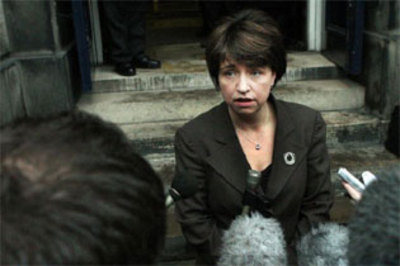

If Scottish Labour are not offering anything new, and aren’t presenting this through new faces, how can they begin to recapture their lost ground? The answer is that, in the current political climate, they probably can’t.
It may take a really dramatic change for Scottish Labour to become a brand that is relevant to enough Scottish voters to make them a force again. The two main stalwarts of the party’s left, Neil Findlay and Elaine Smith will step down in May with little chance of being replaced by anyone similar. Smith, long fed-up by the manoeuvrings and shenanigans of the party hierarchy, had already advocated a complete break. In 2014, at an emergency meeting of the Campaign for Socialism (CfS), following the resignation of Lamont, discussion had taken place about preventing interference from HQ in London, to end “the branch office” image of Scottish Labour. A suggestion of a parallel party, much like The Co-operative Party’s relationship with Labour was suggested. Smith disagreed, her opinion was that it would take a complete break, maintaining only the relationship with the Westminster party. Like the SDLP in Northern Ireland, a separate party, but one that takes the Labour Whip in the House of Commons and Lords.
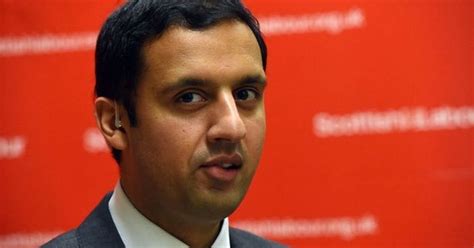

I consider both Monica Lennon and Anas Sarwar to be effective politicians and campaigners, both good at their job, both entitled to think they should get a shot at leading Labour in Scotland. But changing the leader (again) will not be enough. It is probably time for Scottish Labour to look at the real option for change, not a new leader but a new party.
Jim Monaghan is a former staffer with both Scottish Labour and UK Labour and is Arts and Music Editor at Bella Caledonia

As a long-time Scottish shop steward (30years +) and descendant of Labour Party activists from 1900 onwards, I am incensed by present-day Scotland’s situation. Scottish Labour is nothing but an embarrassing ragbag of Westminster lickspittles who are happy to ask how high they must jump on the instructions of any place-man or woman who fills the position of Leader of the Party in London. I am SICK, SICK, SICK to the back teeth of successive lackeys and bum-suckers of all sorts who traduce their own country for the sake of an ermine robe and the chance to sit in the H o L and get their grubby mitts round a daily allowance of £300. What puke-making wretches they are. How has it come to this and who are the fools who vote these disgusting reprobates?
Present day! Look to the likes of Dewar, Robertson, McConnell and the rest
Nuclear Weapons
Yes of course, but also lost in much of the debate up here is that Scottish Labour, unlike UK Labour, oppose Trident renewal
Correct, well except for ‘ Bomber’ Baillie. Just demonstrates how pointless they are.
I am not angry with them. Just embarrassed.
This encapsulates their problem in these final pre-independence days.
In 2014 both labour & tories learned how to shout down to Scotland without ever learning how to be influential in London
So…
The bombs are paid for by Scots
The bombs are housed in Scotland
The decision makers in UK labour wont change either
So what exactly is the point of an uninfluential branch office?
They will only return as an electable force post-indy
@david, indeed, Labour have apparently just called their support for nuclear weapons ‘non-negotiable’:
https://www.bbc.co.uk/news/uk-politics-56198972
and of course Labour Prime Minister Clement Atlee acquired the bomb in a supremely anti-democratic way that essentially slaved British foreign policy to that of the USA. All the rational assessments of the Cold War that I have seen exclude any real prospect of a Soviet invasion of Western Europe: they were used by parties of power and Empire (both Labour and Conservative) as a convenient bogeyman to keep their own populations in check, enhance secrecy, and centralise power. Both Labour and Conservatives are foreever tainted by these ongoing crimes. Pointing nuclear weapons at cities full of living civilians in peacetime is not only a monstrous evil, not only threatens ecocide, but can in many respects be considered illegal, not least as an act of terrorism. Chatham House’s Too Close for Comfort report on frequent nuclear near misses can only be a very partial account of how close we have come to Armageddon on many occasions, since so much remains classified or unknown (like any of China’s mishaps). Nuclear weapons would still be extremely evil if there was a credible and imminent threat of hostile invasion, but in the absence of any such threat (and increasingly UK government and state lies, disinformation and secrecy), they are an unparalleled crime against planetary life, and this one policy alone should make any decent elector refuse to vote for any party of nuclear terror.
Scottish electorate. Moved on, left Labour behind.
https://youtu.be/soM-qvV4IGU
The Circle of 12.
BREXIT, Covid-19 and the UK in US.
Whose circle are you in?
My own hermeneutic circle.
Shouldn’t that have been “Scottish “ Labour Party ?
The labour party was founded by the trade unions to represent the interests of the industrial working class.
This class no longer exists and so labour in Scotland is now irrelevant.
Labour in England survives by tying itself to so called ‘identity politics’ which its traditional heartlands in the north/midlands roundly rejected at the last election.
Time waits for no man and labour has been left behind and is now reduced to been a London based party representing the interests of middle class public sector workers and their ‘woke’ agendas which nobody else gives two hoots about.
Put simply labour gave up on the white work class and not surprisingly the white working class gave up on labour…..
Am I wrong in discerning a coded racist message here?
No.
Just pointing out that the labour party was founded at the beginning of the C20 when the UK was overwhelming ‘white’ and the labour party relied historically on its core support from Scotland/Wales/Northern England which were/are overwhelmingly ‘white’.
Is it now ‘rascist’ to say this, if so I give up.
Not sure about your view of London there are some really working class strongholds for Labour there though I agree there is a woke element to that support as well.
I’m sure that some areas of Glasgow that don’t seem to be seeing any improvement to their poverty levels would not fit in with your view that there is no working class left!
Whoever loses the ”battle ” for leadership of ‘Scottish’ Labour , Sarwar or Lennon , need not despair .
They will have their shot at leading the dinosaur party soon enough ! If you stay in the ‘Scottish ‘ Labour party you will eventually get a chance to ”lead ” it !
Off Topic : Is your headline photo a modern depiction of The Four Horsemen of the Apocalypse ?
I don’t know the answer to this question but appreciate it being asked on Bella and the article is thoughtful and interesting.
One thing is really clear to me: Scotland desperately needs political plurality and good opposition so the question is where will that come from? At the moment it is more likely to be the Tories than Labour so there is no left wing opposition. A new party? Why not but you would have to address the same problem ultimately and that is what to do about independence. To me you either embrace it or not – a halfway, ‘we’ll accept it if people want it’, is not good enough – it’s another Corbyn Brexit fudge which failed utterly.
Arguably, a serious pro-independence party that offers real challenge to the SNP (and the nascent ISP seems to be offering the possibility of that) is very desirable but Labour is founded on the spirit of internationalism and non-nationalism and a belief in the UK as an entity. It is quite a massive tenet to change and it would only work if it were a sincere and profound shift of position, not matter any name change or ‘new party’. One way would be ensure it was still avowedly non-nationalist, openly non-hostile to the UK but pro complete political autonomy, i.e. an approach that does way with all the negativity and sublimated (or indeed open) hatred of ‘Westminster’ (read England) and instead focusses on the actual point and positive reasons for independence. This would give such a party real distinction though whether it would give it appeal is another matter.
“Like the SDLP in Northern Ireland, a separate party, but one that takes the Labour Whip in the House of Commons and Lords.”
This distorted view of a ‘separate party’,which the author seems to suggest will win back the Lost Labour voters merely confirms what we all know.
Vote for us, and we’ll still fall in to line with the Grown Ups in London when it comes to the big stuff. what England wants. like Trident, Brexit, Fortress England. Scotland surrounded by Pritt Patel’s Homeland security barbed wire and watch towers….
Scotland is a European nation; we have been forced out of Europe against our will…
There is no ‘Labour’ party in Scotland.
It is tiresome ven debating the Rise and Fall and Rise again trajectory of this ancient relic of a bygone age.
Anas Sarwar? Really?
The Union is dead; get over it, to quote Sub Lieutenant Andrew Bowie.
Precisely! ‘Get over it!’ Labour has lost its market share in Scotland, whose politics is now defined not by class war but by the culture war between nationalism and unionism. Rebranding won’t cut it. Consumers have voted with their feet, and they’re not coming back.
Pretty short-sighted view. The people can change their minds politically just like that – recent history has clearly shown us that. This article is aimed at those who have an interest in seeing Labour and its politics revived though I suspect it is on the wrong site for any constructive ideas about that.
Sorry, Niemand; I still think you’re flogging a dead horse. But I may be wrong.
I mean you may well be right. But it depends on what one believes in and thinks worth striving for. I dunno but the SNP *could* be on a road to ruin just like Labour was. What then? The SNP is getting more and more dysfunctional and incapable yet it is the only serious vehicle for independence available at present and has the most support by some distance: the dysfunction is directly related to this position. I read somewhere yesterday that without effective opposition / alternatives, damaging internal factionality in political parties is the result.
One thing that has struck me ever more forcefully over recent months is that Scottish politics desperately needs resolution: ‘freedom’ or not? The never-ending limbo state is gradually destroying not just the political climate but is leading to a kind of stagnation / stasis that is doing nothing for people’s every day lives except provide a constant and depressing soap opera of invective and polarisation with very little light, let alone enlightenment.
Well, I don’t carry a torch for any party; so, I can witness the deconstruction of Labour with equanimity.
As for the SNP, I doubt its time’s been had yet. The best we can hope for is that the bitchin that presently besets it will lose it some support among the electorate and thereby prevent it from achieving, even with the support of the SGP, the overall majority it needs to claim a democratic mandate (of sorts) for its party agenda.
Who knows? We might be in this political limbo for some indefinite time to come, waiting for the Godot of independence, with the SNP forming the sort of perpetual minority government our parliament was designed to deliver. Especially if, as a result of its internal bitchin, the SNP also loses the vote-winning asset that is its charismatic ‘Eva Perón’-type figurehead.
(BTW: have you noticed that ‘Sturgeon’ is an almost perfect anagram of ‘Estragon’? I’m sure the likes of Blair could find some arcane significance in this.)
Scottish Labour will be back,indeed the latest polling evidence is beginning to support this.
The SNP hasn’t a genuine Socialist bone in its body politic which is why supporters of Independence on the left should move to the SSP.